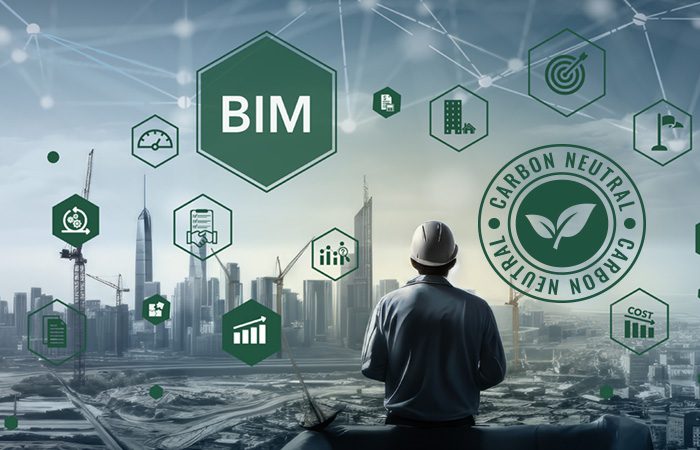
Leveraging BIM for ESG Reporting and Green Certifications
In the global race toward sustainability, the built environment plays a pivotal role. Buildings contribute nearly 40% of global carbon emissions, making it imperative for architecture, engineering, and construction (AEC) stakeholders to rethink traditional methods. Environmental, Social, and Governance (ESG) frameworks have emerged as a strategic compass for responsible investment and development, while green certifications such as LEED, BREEAM, and IGBC are fast becoming non-negotiables in project specifications.
Enter Building Information Modeling (BIM)—no longer just a tool for design visualization but a powerful data-centric engine capable of driving measurable sustainability outcomes. Today, forward-looking firms are leveraging BIM to streamline ESG reporting, meet compliance benchmarks, and unlock green certifications with accuracy, transparency, and speed.
Why ESG and Green Certifications Matter in AEC
The construction industry is under mounting pressure—from investors, regulators, and end-users—to improve sustainability metrics, reduce emissions, and prove social accountability. ESG reporting is no longer a checkbox; it’s a strategic imperative.
Key drivers:
- Investors are demanding ESG disclosures before funding large-scale projects.
- Governments are incentivizing or mandating green building certifications.
- Tenants and occupants prefer energy-efficient, health-conscious buildings.
But capturing and reporting on these indicators—especially environmental metrics—is complex, data-heavy, and often fragmented. This is where BIM’s structured data environment becomes a game-changer.
BIM: A Backbone for ESG Reporting
At its core, BIM is a data-rich digital representation of a building’s physical and functional characteristics. From conceptual design to facility management, it enables project teams to embed, access, and analyze sustainability-relevant data across the asset lifecycle.
Key Contributions of BIM to ESG Reporting:
- Carbon Tracking & Embodied Energy
BIM models can be embedded with environmental product declarations (EPDs), enabling teams to calculate:
- Embodied carbon from materials and construction
- Operational energy use predictions
- Lifecycle assessments (LCA) with real-time feedback
This information feeds directly into Scope 1, 2, and 3 emissions reporting under ESG.
- Water & Waste Monitoring
By simulating plumbing and mechanical systems, BIM allows project teams to:
- Optimize water usage and recycling systems
- Track waste generation during construction
- Model stormwater runoff and infiltration
This data aligns with ESG indicators related to resource use efficiency and waste reduction.
- Indoor Environmental Quality (IEQ)
BIM’s ability to model:
- Ventilation systems
- Daylighting simulations
- Acoustic and thermal comfort
…makes it an asset in reporting on occupant well-being, a key social metric in ESG.
- Supply Chain Transparency
BIM supports traceability of building materials and procurement data. This aligns with ESG goals around:
- Ethical sourcing
- Labor standards
- Local sourcing
With integrated platforms, BIM can even provide a digital audit trail for every material used.
Accelerating Green Certifications with BIM
Green building certifications typically require hundreds of documentation hours—from material specifications to energy models. BIM streamlines this effort by centralizing and automating sustainability documentation.
Here’s how BIM aligns with popular certifications:
LEED (Leadership in Energy and Environmental Design)
- Credits related to energy modeling, material selection, and site optimization can be documented through BIM.
- BIM supports integrated project delivery (IPD), which aligns with LEED’s collaborative prerequisites.
BREEAM (Building Research Establishment Environmental Assessment Method)
- BIM helps evaluate thermal comfort, lighting levels, and acoustic performance—key BREEAM criteria.
- Centralized BIM data supports efficient post-construction audits.
IGBC (Indian Green Building Council)
- BIM provides accurate material and resource estimates for IGBC scoring.
- Waste and water modeling through BIM tools align directly with IGBC credit frameworks.
Key Advantages:
- Fewer manual calculations
- Faster documentation
- Fewer compliance errors
- Stronger audit trails
The Lifecycle Advantage: From Design to Facility Management
Sustainability and ESG reporting don’t end with construction. In fact, operation and maintenance make up the bulk of a building’s environmental footprint. BIM extends its utility into the post-occupancy phase, supporting:
- Energy audits based on real-time usage data
- Predictive maintenance of HVAC and lighting systems
- Sensor integrations for continuous monitoring
- Digital twins for lifecycle performance analysis
This ensures that ESG performance is measured, monitored, and improved long after project handover—transforming buildings into living, accountable assets.
TAAL Tech’s Approach: Engineering for Sustainable Impact
At TAAL Tech, we understand that true innovation in AEC lies at the intersection of engineering expertise, sustainability, and digital technology. Our multidisciplinary teams leverage BIM not just as a modeling tool, but as a strategic enabler for:
- Sustainable infrastructure development
- Smart urban planning
- Asset-level ESG compliance
Here’s what sets us apart:
- End-to-end BIM services, from concept design to facility management
- Experience with green-certified projects, including LEED and IGBC
- Integration with energy modeling, LCA tools, and IoT platforms
- Global code compliance with local sustainability mandates
Whether it’s a net-zero commercial facility, an energy-efficient industrial plant, or a smart city masterplan, we ensure that BIM drives the triple bottom line: People, Planet, and Profit.
Challenges to Address — and the Road Ahead
While BIM offers a robust framework for ESG reporting and green certifications, challenges remain:
- Data interoperability across BIM, LCA, and ESG platforms
- Skill gaps in sustainability-driven BIM implementation
- Inconsistent global standards for ESG disclosures in construction
To overcome this, the industry needs:
- Open data standards like IFC and COBie adoption
- Greater collaboration between sustainability consultants and BIM teams
- Digital maturity and upskilling at the organizational level
Building Responsibly in a Digital World
As the AEC industry steps into a future defined by climate accountability, social equity, and transparent governance, tools like BIM are no longer optional—they’re essential. They empower organizations to build better, report smarter, and lead sustainably.
By embedding sustainability into every digital model, companies can transform compliance from a burden to a competitive advantage, and ESG from a report to a reality.
At TAAL Tech, we’re proud to be part of this transformation—engineering not just buildings, but a better future.


